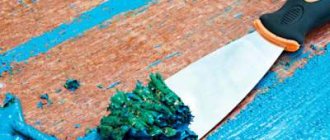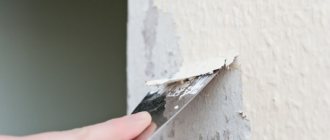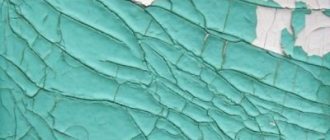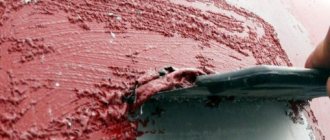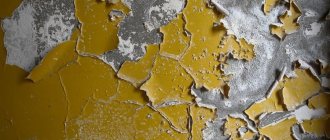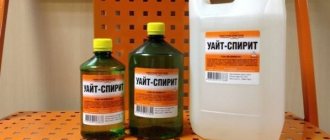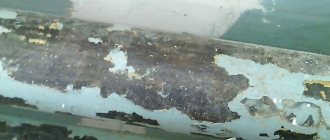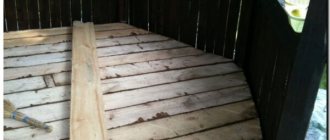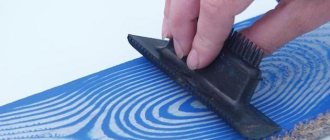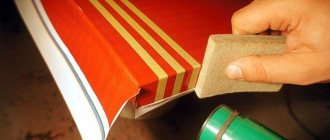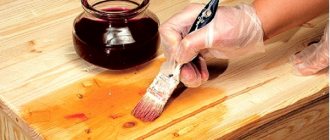How to remove paint from furniture
If you have old furniture that is a pity to throw away, but whose appearance has long been no longer consistent with the original one, update it.
The most common way to update furniture is painting. But in order for the paint layer to adhere well, the surface must be properly prepared by removing the previous paint. You need to know how to remove paint from furniture, since when painting on an uncleaned surface, the result will not last long. Fresh paint must apply evenly, otherwise it will peel.
Therefore, when preparing furniture for renovation, it is important to carefully remove old paint. Of course, when preparing, you should not forget about cleaning the furniture from dirt and dust. This can be done with a special vacuum cleaner or furniture detergents.
Useful tips and tricks.
Knowing some of the nuances of removing paint from wood, plastic, concrete, glass, you can easily cope with this task:
- you need to clean the coating with a spatula using gentle movements, otherwise there is a risk of damaging the wood;
- if it is possible, it is better to move all work on washing or removing paint outside;
- be sure to use safety glasses, overalls, gloves, and a respirator;
- to reduce the risk of injury, ensure proper lighting;
- Processing large items is best done on a stable table;
- When processing planks, beams, and frame parts, use a vice.
See the video below for ways to remove old paint.
Let's start removing paint
So, there are chemical and mechanical ways to remove paint. The first option is to chemically destroy layers of old paint by softening them with special thinners. You need to choose these products taking into account the type of varnish or paint that originally coated the furniture. Oil varnishes and paints are most often removed with white spirit or turpentine, bakelite and alcohol varnishes with ethyl alcohol, and other varnishes with a mixture of turpentine and gasoline.
Before you begin, you need to test the effect of the selected thinner on a small area that is not in plain sight. For work you will need: a brush (painting brush) or a cloth swab wound on a wooden stick; a block of wood with an edge cut at an angle for scraping off softened paint (a spatula will also work). You need to work with good ventilation and wearing rubber gloves. If work is carried out in a room, it is necessary to cover the floor with paper. But the best option is to work outdoors.
The surface prepared for cleaning should be positioned horizontally. Using a swab or brush, generously apply thinner to the surface of the furniture. If a suitable thinner is selected, after 30 min. the paint will soften. Now we begin to clean it off with a spatula, holding it horizontally and moving along the grain of the wood, while trying not to leave scratches. If the surface of the furniture is very old and this is not the first time you have painted or varnished it, then the thinner may affect several layers at once. After cleaning off the top layers, repeat the procedure.
How to remove paint from furniture, especially from turned legs and curved parts?
Typically, wetted thinner is used with a coarser cleaning material. In this case, you can use a soft wire brush, a fine wire scourer, or an old paint brush. To treat round legs, the wire wool is pulled out and twisted into a rope. Holding both ends of the wire, wipe the leg.
After removing the paint, thoroughly rinse the surface of the product to remove any remaining thinner and dry the furniture.
If you cannot select a suitable thinner, try the mechanical method. It is also used in cases where old furniture has already been painted several times and the lower, oldest layers have hardened and are not susceptible to thinner.
With this method, the paint is removed with a specially made scraper or a homemade glass scraper. Its cutting side is a square plate measuring 5x5 cm. To make it more convenient to work without fear of cuts, make a canvas cover for it. Only the edge of the glass should protrude outward. If you wrap the glass in paper, it will stay in the case more tightly. The cutting glass edge does not dull for a long time, and “sharpening” it is a matter of minutes: just turn the plate over to the other side. But keep in mind that scrapers only work along wood fibers, lengthwise! You can also use an electric drill, but only with a cylindrical attachment that removes paint or varnish in the direction of the grain.
When rough cleaning is completed , the surface is sanded with sandpaper - first coarse and then fine-grained. The wood is sanded along the grain. To sand a flat surface, use a wooden block wrapped in sandpaper: it is more convenient to hold in your hand. Curved curves and details are sanded with sandpaper on a thin stick, or with a wire wool, as mentioned above.
The finished surface must be moistened. This is necessary so that the ends of the wood fibers, smoothed by sanding, rise when drying. They are removed, sanded again, brushed off and the final finishing begins: coated with varnish or paint (it is advisable to add thick oil paint to the varnish to ensure the desired color).
If the wood is well preserved and has a bright color, you can simply polish it with cloth or cover it with mastic.
When coated with wax or varnish, the wood changes color. Wetting it with water will give you a rough idea of the final color.
By the way, the same technology is suitable for cleaning doors and window sills from old paint.
Now you know how to remove paint from furniture.
Source: xn—-btblbprdo.xn--p1ai
How to remove paint from furniture: the best folk remedies
The best folk remedies will help you quickly and inexpensively wash off paint of various origins and restore the former cleanliness and freshness of your furniture.
Modern dyes are available in almost every home, so the appearance of unpleasant traces from one or another drug on upholstered and cabinet furniture is inevitable.
The most common are: children's paints for drawing, gouache, hair dyes, henna, water-based and acrylic paint products.
Therefore, before removing paint from furniture, it is necessary to find out the composition of a particular substance. Also, before cleaning upholstered furniture, you must know the composition of the upholstery material, because those preparations that can be used on wool, for example, can leave marks on flock, and vice versa.
How and with what to remove paint from furniture?
So, if the composition and type of contamination is known, you can get to work. To do this, you will need clean and preferably light-colored rags and napkins made of fiber or cotton, as well as protective gloves for your hands, detergents, a water container, and sponges.
In order to remove paint from furniture without streaks and whitish spots, before using a particular product, you should definitely arrange a test: it will help you find out how the substance acts on the fabric and understand whether it can be used in the future. Testing is carried out on an inconspicuous area of the product.
To remove paints for drawing and gouache, you can use:
- brown laundry soap (soap and rinse);
- ammonia or white spirit (apply a little alcohol to the fabric and quickly treat the soiled item, then rinse).
It must be remembered that only cool water should be used, since hot water can cause pigments to eat into the fibers.
You can wipe off traces of water-based paint with a sponge dipped in water, as well as with a soap solution. But acrylic can only be removed with special solvents or:
- white spirit;
- ammonia slightly diluted with water;
- turpentine (it is better not to use on dark products);
- gasoline (for white products it is better to take purified gasoline and add white clay);
- acetone (not suitable for genuine leather products).
Any of the solutions must be applied to a napkin or a piece of clean cloth and treated with it on the marks. For woolen items, it is better to take vegetable oil and then wash the stain with soapy water.
You can remove eyelash and eyebrow dye, just like removing hair dye from furniture, using simple folk remedies. But a solvent, acetone or natural nail polish remover will help remove the remaining shoe paint.
How to remove hair dye from furniture?
Accidental drops of hair dye on furniture can ruin its entire appearance. At the same time, it is almost impossible to remove old drops. If the fabric is white, then bleach or chlorine-containing preparations will help to revive the product, but not in all cases.
To remove hair dye from furniture (fresh drops), you can use the following simple methods:
- lather up dirt and remove it with a sponge. Then heat a little glycerin and rub it into the fabric. After this, remove glycerin with a mixture of ammonia and salt (mushy composition);
- treat the drops with nail polish remover (apply a cotton pad soaked in the liquid for a couple of minutes, then repeat, then wash with soap and water).
For light-colored products, you can also use preparations based on chlorine or bleach, but be sure to test them before use.
If home methods do not produce results, or you simply do not want to risk beautiful and expensive products, then it is better to contact a cleaning company. Thanks to our latest and proven certified preparations and powerful equipment, dry cleaning of upholstered furniture from paint will help restore the former cleanliness and freshness of your furniture and carpets.
Source: www.mrblesk.ru
Cleaning furniture from paint and varnish
The process of updating old furniture begins with cleaning it. Remains of varnish or paint on the surface of the furniture must be carefully removed, otherwise, after restoration, these stains will appear through the layer of new paint material.
You can easily clean your furniture at home. This can be done using two methods: chemical and mechanical. Before choosing a specific method and starting work directly, you should evaluate the condition of the furniture, what varnish or paint it is covered with.
One of the easiest ways to get rid of an old layer of paint or varnish is a chemical method. The essence of this method is to apply a certain solution to the surface of the furniture, which will soften the old layer of paint, and after that it can be easily removed. The choice of solvent directly depends on the material with which the furniture is covered.
So, for example, oil paint or varnish is easiest to remove with white alcohol or turpentine; ethyl alcohol is the best means for dissolving alcohol or bakelite varnish. Another good solution is a mixture of gasoline and turpentine, which will help remove some types of varnish. To work with solvent you will need rubber gloves, a spatula and a paint brush. The solvent should be applied to the surface in a thin layer and wait about half an hour, then remove the old coating and wash the surface. If necessary, this procedure is carried out several times until the old layer of paint is completely removed. It is better to carry out the work in the fresh air; if this is not possible, then at least ensure good ventilation of the room.
The mechanical cleaning method is also very often used when restoring old furniture. It is also indispensable if the paint layer is very thick and could not be completely removed using a solvent. The main tool for mechanical cleaning of furniture is a special scraper, which can be replaced with a homemade scraper made from ordinary window glass. After using the scraper, you should additionally clean the surface with sandpaper - first coarser, and then fine-grained. When mechanically cleaning wooden furniture, it is important to remember that the scraper and sandpaper must move along the wood fibers, otherwise there is a risk of damaging the integrity of the surface.
Both mechanical and chemical methods of cleaning furniture from varnish and paint require special care and accuracy, because the overall appearance of the restored furniture will depend on how this part of the work is done. Photo from Forever decorating.
Additional tips and tricks
When carrying out work on updating the paint on the wooden floor in the apartment, it is also recommended to take into account additional tips. Selecting the optimal cleaning method depends on a combination of factors, including layer thickness, type of paint, current condition of the surface and the allocated budget for repairs.
In situations where no method has helped remove the paint, you will need to completely replace the wood. This is due to the fact that the paint has already been absorbed into the surface and cannot be removed. This process will interfere with the adhesion of the new layer to the floor, so it is easier to perform a complex installation.
How to remove paint from furniture
If you have old furniture that is a pity to throw away, but whose appearance has long been no longer consistent with the original one, update it. The most common way to update furniture is painting. But in order for the paint layer to adhere well, the surface must be properly prepared by removing the previous paint. You need to know how to remove paint from furniture, since when painting on an uncleaned surface, the result will not last long.
Fresh paint must apply evenly, otherwise it will peel. Therefore, when preparing furniture for renovation, it is important to carefully remove old paint. Of course, when preparing, you should not forget about cleaning the furniture from dirt and dust. This can be done with a special vacuum cleaner or furniture detergents.
Features of cleaning the floor from paint
Removing paint from the floor is a seemingly simple task, but this type of work still has some peculiarities. For example, it is important to follow safety precautions.
- When working with heating devices, you need to be careful not to get burned. Also, do not inhale the vapors that are formed when the paintwork is heated. A respirator must be used.
- It is also advisable to use protective equipment when working with substances used in the chemical method of removing coatings. Gloves and a respirator will help protect your skin and respiratory tract.
Respirator
- When removing the coating using mechanical methods, a large cloud of dust is often formed, which is also not recommended to inhale - respiratory diseases can develop. In addition to a respirator, it is recommended to use goggles to protect your eyes.
- You should always follow the instructions for using chemicals and tools.
- It is better to first test the selected paint removal method on a small area of the floor, since in certain cases one or another method may be ineffective.
Old paint stays strong
Let's start removing paint
So, there are chemical and mechanical ways to remove paint. The first option is to chemically destroy layers of old paint by softening them with special thinners. You need to choose these products taking into account the type of varnish or paint that originally coated the furniture. Oil varnishes and paints are most often removed with white spirit or turpentine, bakelite and alcohol varnishes with ethyl alcohol, and other varnishes with a mixture of turpentine and gasoline.
Before you begin, you need to test the effect of the selected thinner on a small area that is not in plain sight. For work you will need: a brush (painting brush) or a cloth swab wound on a wooden stick; a block of wood with an edge cut at an angle for scraping off softened paint (a spatula will also work). You need to work with good ventilation and wearing rubber gloves. If work is carried out in a room, it is necessary to cover the floor with paper. But the best option is to work outdoors.
The surface prepared for cleaning should be positioned horizontally. Using a swab or brush, generously apply thinner to the surface of the furniture. If a suitable thinner is selected, after 30 min. the paint will soften. Now we begin to clean it off with a spatula, holding it horizontally and moving along the grain of the wood, while trying not to leave scratches. If the surface of the furniture is very old and this is not the first time you have painted or varnished it, then the thinner may affect several layers at once. After cleaning off the top layers, repeat the procedure.
How to remove paint from furniture, especially from turned legs and curved parts?
Typically, wetted thinner is used with a coarser cleaning material. In this case, you can use a soft wire brush, a fine wire scourer, or an old paint brush. To treat round legs, the wire wool is pulled out and twisted into a rope. Holding both ends of the wire, wipe the leg.
After removing the paint, thoroughly rinse the surface of the product to remove any remaining thinner and dry the furniture.
If you cannot select a suitable thinner, try the mechanical method. It is also used in cases where old furniture has already been painted several times and the lower, oldest layers have hardened and are not susceptible to thinner.
With this method, the paint is removed with a specially made scraper or a homemade glass scraper. Its cutting side is a square plate measuring 5x5 cm. To make it more convenient to work without fear of cuts, make a canvas cover for it. Only the edge of the glass should protrude outward. If you wrap the glass in paper, it will stay in the case more tightly. The cutting glass edge does not dull for a long time, and “sharpening” it is a matter of minutes: just turn the plate over to the other side. But keep in mind that scrapers only work along wood fibers, lengthwise! You can also use an electric drill, but only with a cylindrical attachment that removes paint or varnish in the direction of the grain.
When rough cleaning is completed , the surface is sanded with sandpaper - first coarse and then fine-grained. The wood is sanded along the grain. To sand a flat surface, use a wooden block wrapped in sandpaper: it is more convenient to hold in your hand. Curved curves and details are sanded with sandpaper on a thin stick, or with a wire wool, as mentioned above.
The finished surface must be moistened. This is necessary so that the ends of the wood fibers, smoothed by sanding, rise when drying. They are removed, sanded again, brushed off and the final finishing begins: coated with varnish or paint (it is advisable to add thick oil paint to the varnish to ensure the desired color).
If the wood is well preserved and has a bright color, you can simply polish it with cloth or cover it with mastic.
When coated with wax or varnish, the wood changes color. Wetting it with water will give you a rough idea of the final color.
Source: www.vusnet.ru
Household repair No. 1
Choose reliable craftsmen without intermediaries and save up to 40%!
- Fill out the application
- Receive offers with prices from masters
- Select performers by price and reviews
Post a task and find out prices
Before painting a wooden surface that already has one or more previously applied layers of paint, remove the old coating using available materials. If you don't know how to remove old paint, use step-by-step instructions.
First, prepare the wood for painting by sanding the product and impregnating it with a primer. By choosing the right tools and calculating the effort, you can process up to a meter of painted surface area in 10-20 minutes .
The specificity of wood as a working material is its softness (depending on the type and quality of the wood). When preparing a wooden surface for painting or varnishing, determine whether it is necessary to remove the entire layer of old paint or whether the product can be partially processed. Consider the following characteristics of the paint that is being removed:
- thickness - a single-layer coating can not be removed. The varnish (coloring substance) is easier to apply to it, holds better, and the wood is not susceptible to harmful effects once again. At the same time, the creation of very thick layers is fraught with a decrease in strength and density - they are easily destroyed at the slightest mechanical impact
- texture (may not coincide with the quality and functional characteristics of the new coating)
- color - if you apply a layer of new paint that is not thick and dense enough, the old one will show through or change the color of the new one (for example, overlaying blue and red colors will give a purple tint)
- The old coating has been applied for a long time – it can peel off on its own. Painting without removing the old layer, which is flaking, will “make” the treated area lumpy
Types of washes
All types of washes are divided into two large groups: universal and specialized. Universal compositions are designed to remove any paints and varnishes from wooden surfaces. They are capable of dissolving paints and varnishes both water-based and those containing organic solvents.
The purpose of specialized removers is to soften only certain types of paints. For example, there are separate remover compositions for removing textured, oil-based and other types of paintwork materials. Specialized removers are considered more effective, since their development takes into account the characteristics of specific types of dyes. At the same time, specialized formulations are more expensive.
Removers are produced in the form of liquids, jelly and dry substances for further dissolution. When choosing a cleaning composition, it is necessary to proceed from the circumstances: for example, a jelly-like paste adheres well to wood, and therefore will not drain from vertical surfaces.
But liquid removers are the best choice if you have to clean a surface that has small parts or fine threads. If we are talking about expensive furniture (especially those covered with veneer), you need to choose a liquid that can be removed with white spirit, since if this is not done in time, the wood fibers of the product will swell.
Before purchasing a remover, it is recommended to carefully read the instructions (usually they are written directly on the packaging) or consult with a sales consultant. It should also be taken into account that not every preparation is suitable for working with wood. Therefore, it is important that the cleaning composition is intended specifically (or including) for wooden products.
What is needed to remove old paint from a wooden product?
Inspect the condition of the surfaces being treated, the structure and quality of the wood, and make sure that the product is suitable for further use. Based on this, select surface treatment methods, dress appropriately (in work, protective clothing) and take special tools. Before removing paint from wood, prepare the product appropriately (using one of the methods discussed below).
To remove the paint and prepare the surface for various operations, use the following tools and set of materials:
- chemical impregnation for cleaning surfaces from paint and varnish substances
- hair dryer used for construction purposes
- grinder with a grinding disc or drill with an abrasive attachment
- sandpaper, small spatulas
- means of protection against toxic substances
Effective cleaning methods
There are several ways to remove paint. Each of them is good in its own way, but also has some disadvantages. You can choose the best option based on the individual characteristics of the surface.
Mechanical method
Surfaces with a small area can be treated with sandpaper.
If the coverage area is small, manual work using regular sandpaper is quite suitable.
- Pre-treatment is done with coarse-grained sandpaper, then the surface is finished with fine-grained sandpaper.
- A wooden block around which a piece of skin is wrapped will make the process easier. This is the simplest and most affordable means for removing paint from wood. Disadvantages: the skin clogs too quickly, which will have to be changed often, and the actions are labor-intensive.
The photo shows the use of a drill with an attachment.
- To speed up the cleaning process, a grinder with a wire brush attachment is useful. You can use an electric drill, attaching to it a similar attachment with stiff metal bristles or an attachment with sandpaper.
- Spatulas of different widths, a hand plane, a chisel, a rasp and a file will help to free the surface. All this can be successfully combined, adapting to the features of the terrain.
For industrial purposes or in cases of large volumes, sandblasting is effective.
- A jet of air or water mixed with sand is supplied from a high-pressure apparatus.
- Sand grains, striking at high speed, remove the old layer. Moreover, the device works equally well on both wood and metal.
- The downside is the high price of the device and the need for skills to work with it.
Note! The work will certainly be complicated by dust and particles of the removed layer. Therefore, it is advisable to carry out the treatment after being previously equipped. Use a respirator to protect your respiratory tract and special goggles for your eyes. Put gloves on your hands.
Heat treatment
Using a hair dryer.
The unnecessary coating of wood from varnish or paint is removed, in this case, by heating.
Before removing paint from wood, familiarize yourself with the operating rules of the devices.
- Using a heat gun or a hair dryer . These are professional devices that soften the layer using supplied heated air. Powered by electricity. A hair dryer is the most effective and safe. It heats the dried layer to +100⁰ and above, softening it and making it easier to remove.
- A gas soldering device does the job well . But it leaves a persistent burning smell. In addition, the gas in it runs out too quickly. Having overly active and nervous neighbors with a sensitive sense of smell, you are unlikely to be able to avoid problems.
- Small fragments can be heated over a regular gas burner . This is acceptable if you decide to restore something minor with your own hands. Once the paint begins to swell and bubbles appear, it can be easily removed with a spatula or knife.
Note! With this method, there is a high probability of wood burning. Therefore, you will have to adapt to the supplied temperature so as not to get a scorched surface instead of a smooth one.
Using a blowtorch.
- Craftsmen often use a blowtorch . It is available because many people have it. But it should be manipulated with extreme caution, observing all safety measures. Moreover, soot is inevitable.
When heat treating wood, be careful because you will be dealing with hot tools. If it is not possible to work outside, ensure good ventilation indoors.
Chemical method
Liquids for removing paint.
Today, a large assortment of liquid, jelly-like and soluble removers is produced. If you choose the right product, your problem of how to quickly remove paint from wood will be solved in the shortest possible time.
Even old, tightly dried paint or varnish will simply dissolve or soften when exposed to a solvent, acid or alkali. Then removing everything unnecessary without damaging the wood structure will not be difficult.
When you arrive at the store, consult with a sales consultant. The fact is that for a certain type of paint you will have to choose the appropriate wash. Detailed instructions on the packaging also warn about this.
A little about how to remove coating with a special compound.
- Dip a thick-bristled brush into the liquid, then apply it to the surface.
- Let the wood sit for about half an hour. During this time, the composition will be absorbed into the layer.
- Reapply the mixture, making sure that the dried paint softens.
After exposure to the remover, the softened coating can be easily removed.
- Carefully scrape off the soft crust with a spatula.
- A damp cloth will help to completely remove the residue.
- Wash the treated surface with warm water and soap, thus degreasing it.
- After complete drying, the wood can be primed and painted.
Removing paint from wood products using chemical means
Using chemicals is the fastest and most convenient way to remove cracked paint from a wooden base. In a specialized store you will find a product based on potassium carbonate and lime. The jar contains instructions for correct application of the substance to the surface, as well as an explanation of how to remove old paint. Using a soft bristle roller or brush, apply the product to the painted item. After a few minutes, use a small spatula to remove the paint from the surface.
The disadvantage of this method is the need to isolate the product from other household items before removing the old paint from the wood. The applied product is very toxic and easily permeates everything around (it lingers best on upholstered furniture and thick wallpaper, fabric upholstery). Removal of old paint must be carried out wearing protective gear.
Precautions during operation
Removing dyes from wood is a complex, time-consuming and unsafe process. When choosing any of the above methods, you must follow safety precautions:
- You should work in protective clothing - gloves, overalls, goggles.
- When working, provide good lighting and reliable tables (preferably a workbench).
- When using mechanical methods (especially with power tools), you need to protect your eyes, mouth, and nose from flying crumbs.
- It is better to work outdoors or indoors with good ventilation.
- Do not work near open flames or heating devices. When using thermal methods, fire safety rules are followed.
- If the cleaner gets on your skin or eyes, you need to rinse them under running water. If allergies or burns occur, consult a doctor.
The remover should be used only within the expiration dates specified by the manufacturer.
The paint layer on the wood gets old and often needs updating. The best way to remove old coating is with washes. Ready-made preparations quickly dissolve paintwork materials, do not harm the wooden base, are non-toxic and safe for humans.
Source
How to remove paint using heat and abrasives?
Before repainting your piece, learn how to remove paint from wood using heat. This method is simpler than the previous one, but more dangerous, as it can cause a fire in the paintwork. The method is based on the fact that when exposed to temperature, the paint begins to decompose and release gas. It penetrates and accumulates under the coating, causing the paint to bubble and completely separate from the wood base.
To thermally remove old paint from a wooden surface, take a hairdryer or iron that is used in construction. A hair dryer works like a regular hair dryer, but has very high air heating temperatures. In the second case: the foil is applied to the surface, heated from above with an iron, and then removed along with a layer of unnecessary paint.
The easiest way to remove old cracked paint is mechanically using:
- grinders or drills with grinding pads
- sandpaper of varying degrees of hardness (according to the size of the abrasive elements)
This creates a lot of dust, so make sure you have protective breathing masks and a gown to safely remove old paint from woodwork.
How to quickly remove?
There are several ways to remove paint from a wall, each of which differs in the complexity of execution, the necessary tools, and the presence of certain knowledge and skills.
Mechanical methods
The mechanical cleaning method involves the use of the following tools:
- painting knife;
- putty knife;
- chisels;
- scraper;
- axe.
Algorithm of actions:
- Prepare the tool. It is necessary to check that the blade is well sharpened and tightly fixed to the handle.
- Place the tool at an acute angle to the wall, and make many cuts with short strokes (the more, the better).
- Moisten the wall generously with water from a spray bottle.
- Scrape or knock down the swollen layer of paint.
Work with hand tools is carried out only in protective glasses, gloves and thick clothing. Otherwise, there is a high risk of injury from flying pieces of old decorative coating.
Heat treatment
The simplest, fastest and most effective way to clean a wall is to heat the decorative coating with a hairdryer. Everything is very simple: the paint on the wall is burned with a stream of hot air from a hair dryer, and then very quickly removed with a spatula or scraper.
In order for the cleaning process to go faster, it is carried out simultaneously by two people (one burns, the second immediately removes the paint).
Limitations of using the thermal method:
- it is problematic to use the burner in apartment buildings;
- It is unacceptable to burn the wall without using personal protective equipment (during the burning process, the paint releases elements hazardous to health);
- absolutely not suitable for removing decorative coatings from metal and plastic surfaces;
- It is prohibited to use the thermal method in rooms without ventilation.
In cases where it is not possible to use a construction hair dryer, it can be easily replaced:
blowtorch (it is important to follow fire safety rules); iron and foil (cover the painted surface with foil and then heat it with an iron); household hair dryer (inferior to a construction hair dryer only in terms of service life).
Electromechanical
You can remove paint from a concrete wall as quickly as possible using an electromechanical method. Simply put, a variety of power tools are used to clean walls:
- A grinder with a wide grinding wheel (it is recommended to use a wheel with an abrasiveness of at least 40). You can also use a grinder with a special attachment in the form of a steel wire brush.
- Drill with a paint remover attachment. The nozzle is a structure of three chains, each of which has thirteen links. During operation, the chains break the decorative coating (flying off in pieces) with a minimum amount of dust.
- Drill with crown bit. The process of cleaning a wall with such a power tool is quick, with minimal risks of injury and dust formation. The only thing that needs to be taken into account is the high cost of the nozzle and the need for its frequent replacement.
Work using power tools is very rarely used on wooden surfaces (active rough cleaning disrupts the structure of the wood).
Use of chemicals
The chemical method of removing paint from a wall involves the use of special liquid or gel removers and solvents:
- White Spirit,
- acetone.
Work with chemicals is carried out only in a very well-ventilated area and using personal protective equipment (gloves, respirator, goggles).
Basic rules for applying chemical solvents
- liquid compositions are applied using a spray gun, gel solvents - with rollers or brushes;
- before cleaning the wall, you must wait a certain period of time (indicated by the manufacturer on the label);
- remove the softened paint using a spatula or iron brush;
- The wall cleaned with chemical reagents is additionally treated with an acidified solution (water with the addition of citric acid or vinegar).
If signs of illness (dizziness, nausea) appear during the use of chemicals, work must be stopped immediately and the premises must be left.
Unsafe methods for cleaning old paint from wood products
It is not recommended to use open fire (gas burners) to heat the paint layer. This leads to the ignition of the coating material, and then the wood itself. In addition, some types of wood, when heated, release special resins, due to which you will not be able to repaint the product.
Any type of pre-treatment of a product can lead to unpleasant consequences if you do not follow safety rules and work without protection. If the product can be taken out into the open space, then it is advisable to do this before removing old paint from its wooden surfaces. This will help you avoid the additional hassle of cleaning your home, as well as unpleasant odors resulting from chemical treatment of a wooden item.
Removal Methods Not Recommended
Some craftsmen use a thermal method to remove old coating by exposing the treated area of the product to open fire. Using this method is highly discouraged due to the increased risk of possible fire.
In addition, when processing products from various types of wood using this method, the material dries out and its internal structure is damaged, which significantly reduces the strength of the product and its service life.
Some types of wood during this treatment can release resins that are easily flammable or create a film on the product. This film will significantly reduce adhesion, and may even prevent you from applying a new layer to the surface.
When choosing methods for removing old coating, the main thing is to follow the rules of personal safety, use protective equipment and follow safety precautions when working with electrical appliances.
Is it necessary to remove old cracked paint from a product?
Treating the wood before painting further facilitates the effective application of the new paint coating. Inspecting the wood surface will help you determine how to treat and remove the old paint, and whether it needs to be done at all. Removal of the coating is necessary if:
- it cracked, swelling appeared
- Several layers have already been applied to the surface, causing its coating to become uneven and lumpy
- the previous version was of a different quality/texture or color. This may negatively affect the final result of painting, or the latter will lie unevenly, lag, etc.
You need to prepare for the fact that removing paint from a surface is a labor-intensive process that will require a lot of effort and time. If you do not know how to remove paint from wood or do not want to bother yourself with such work, contact qualified craftsmen.
Source: remont.youdo.com
